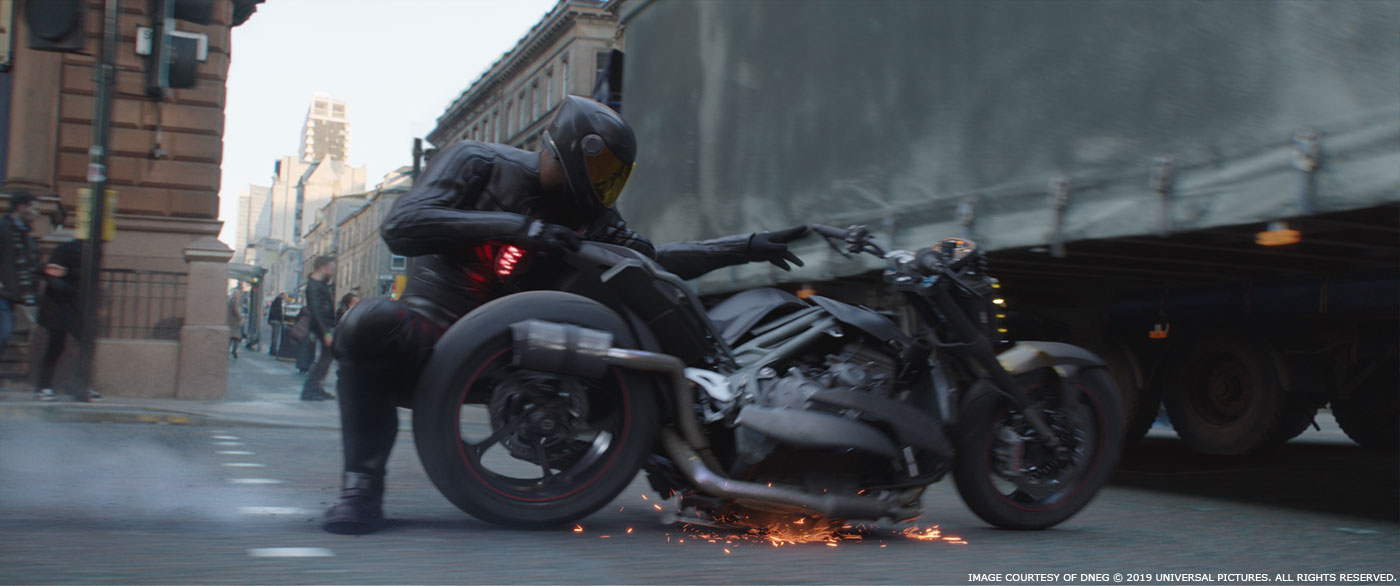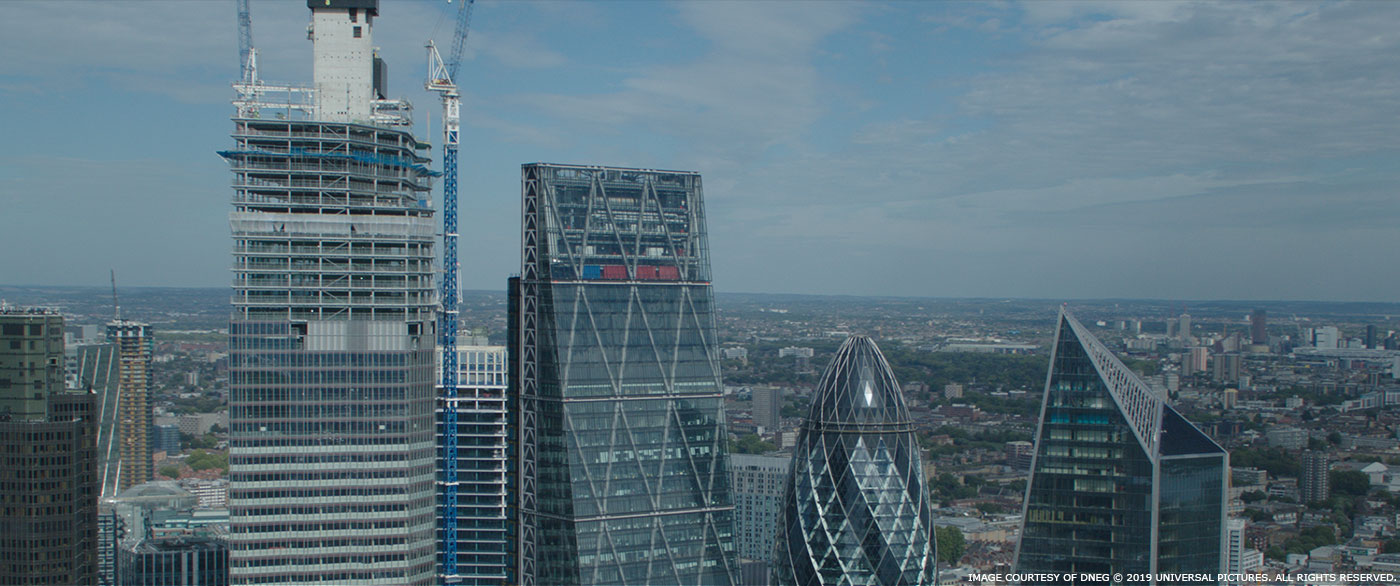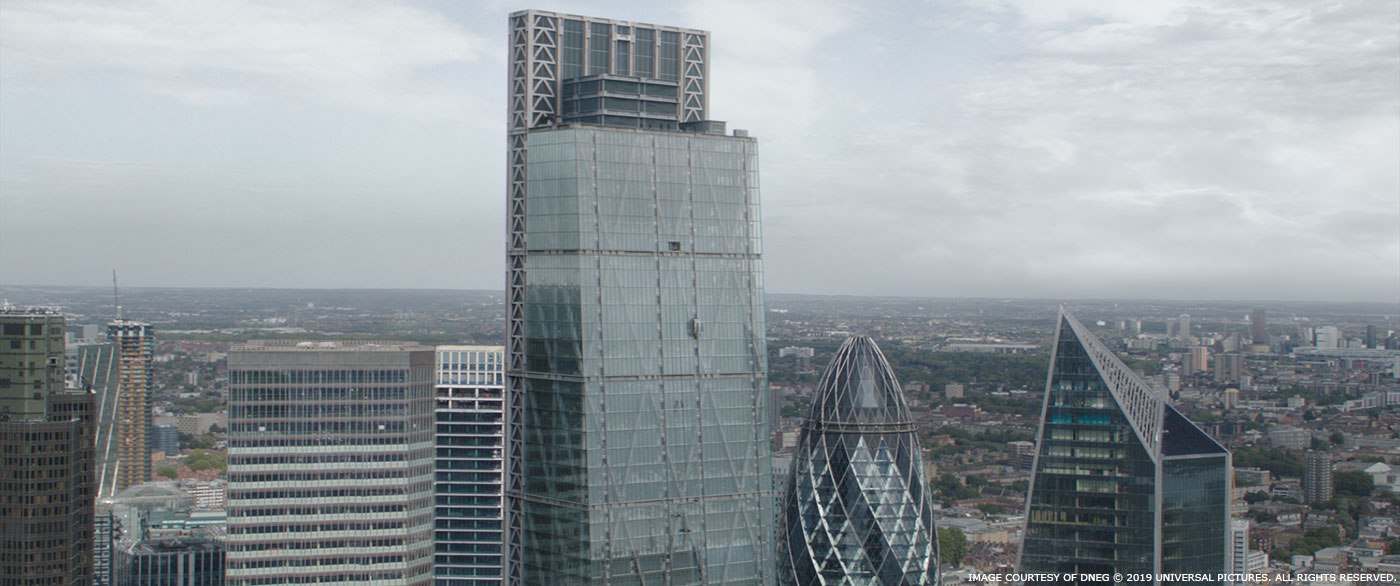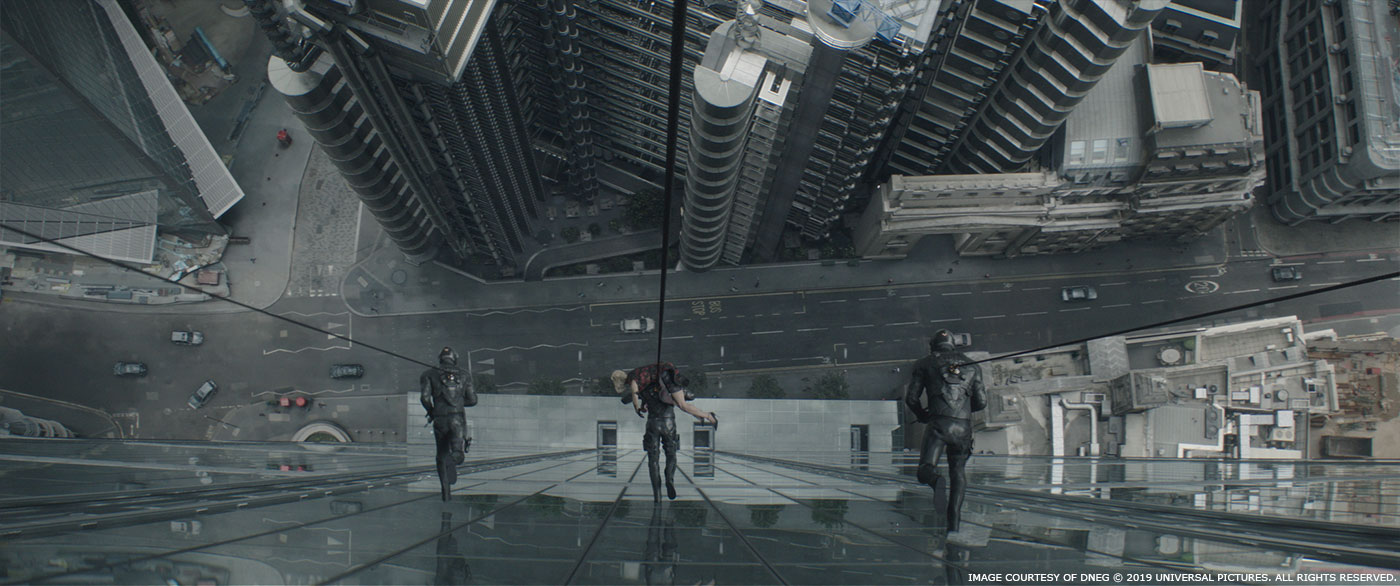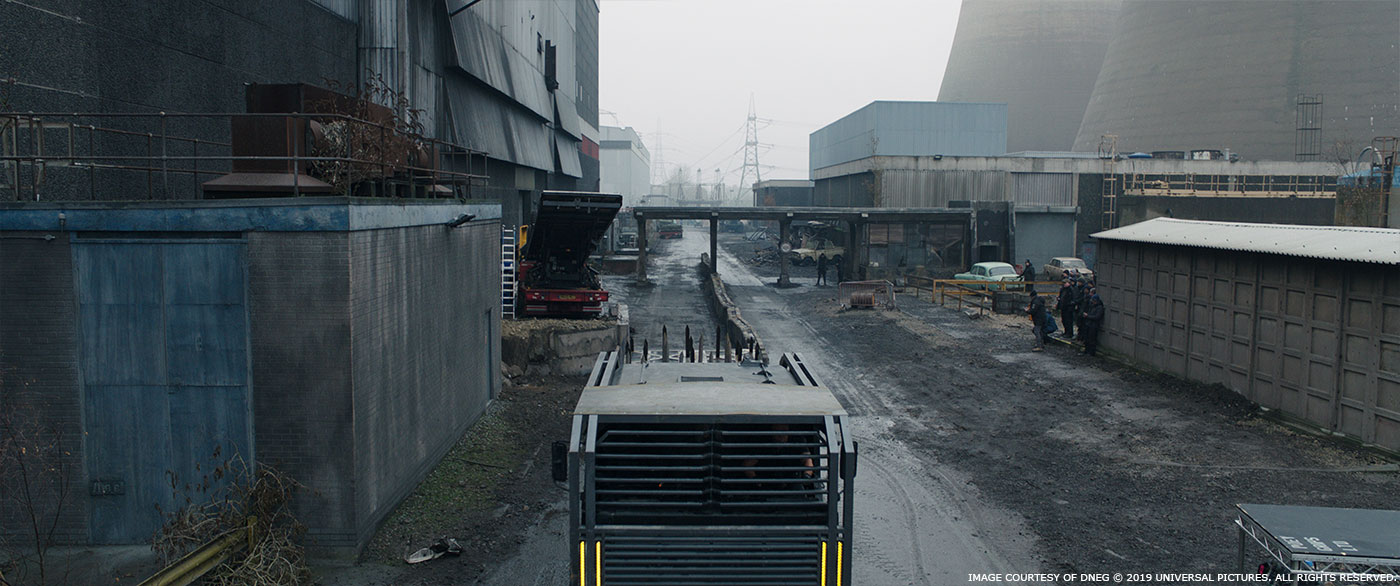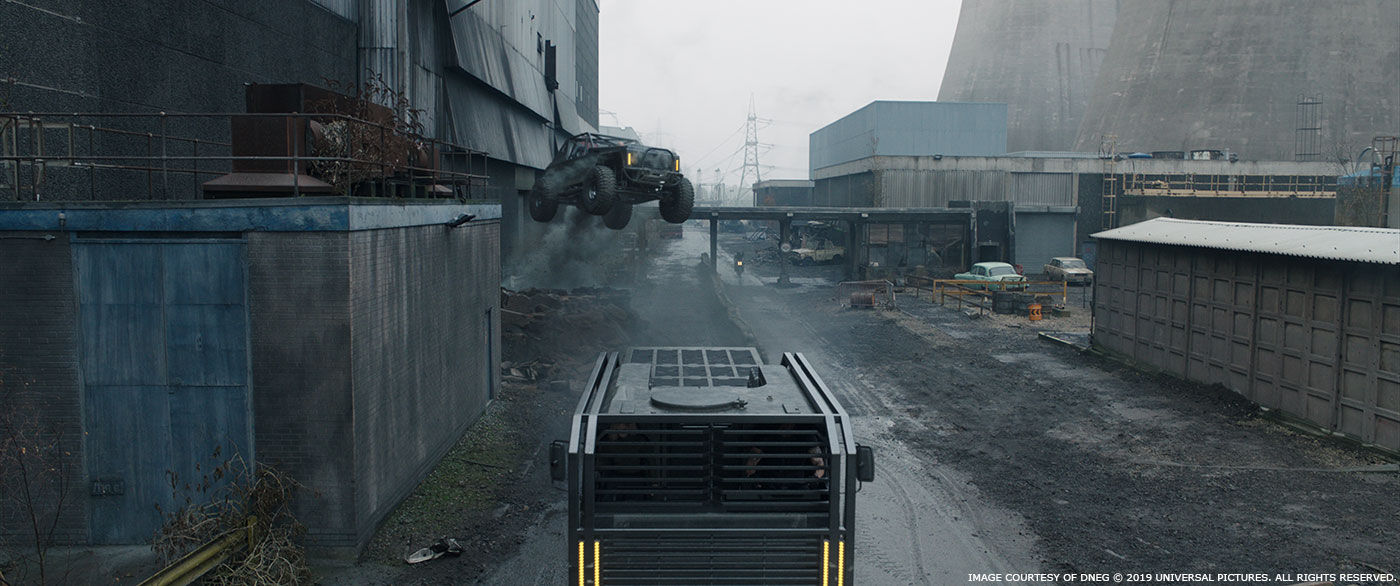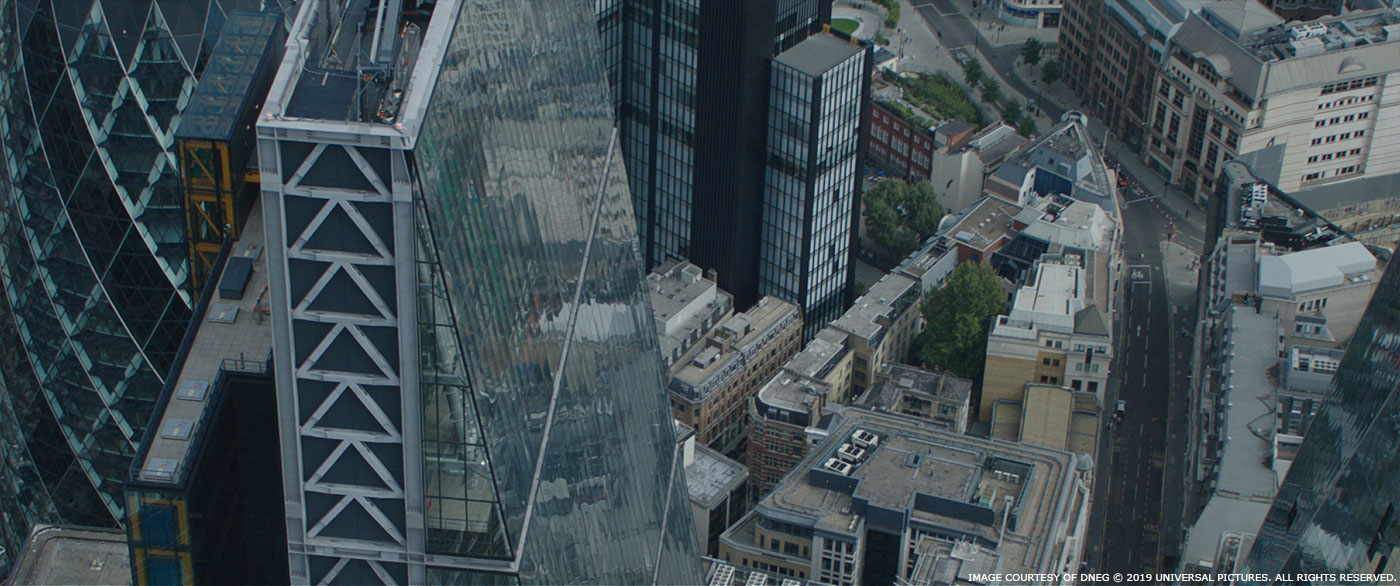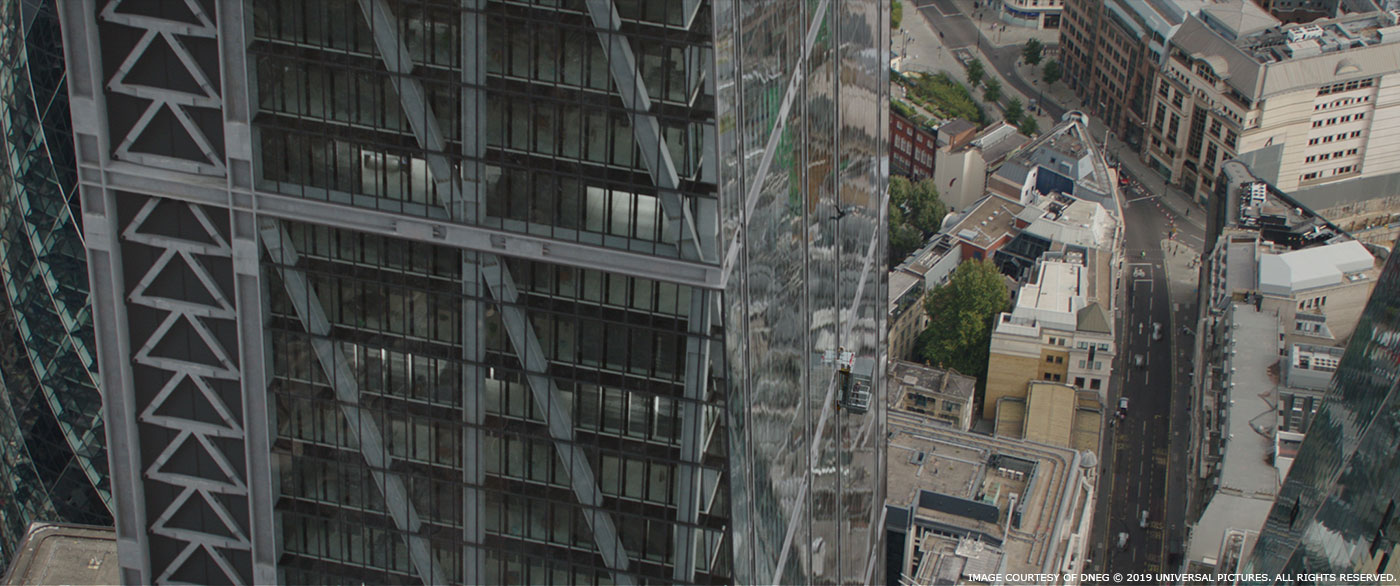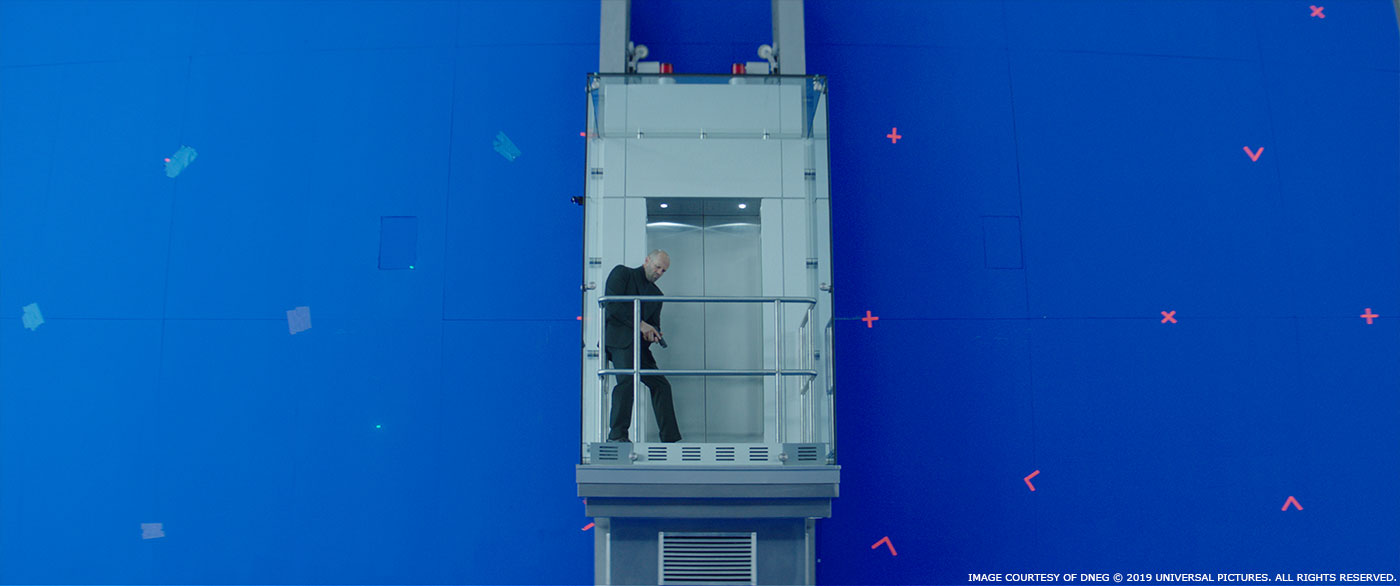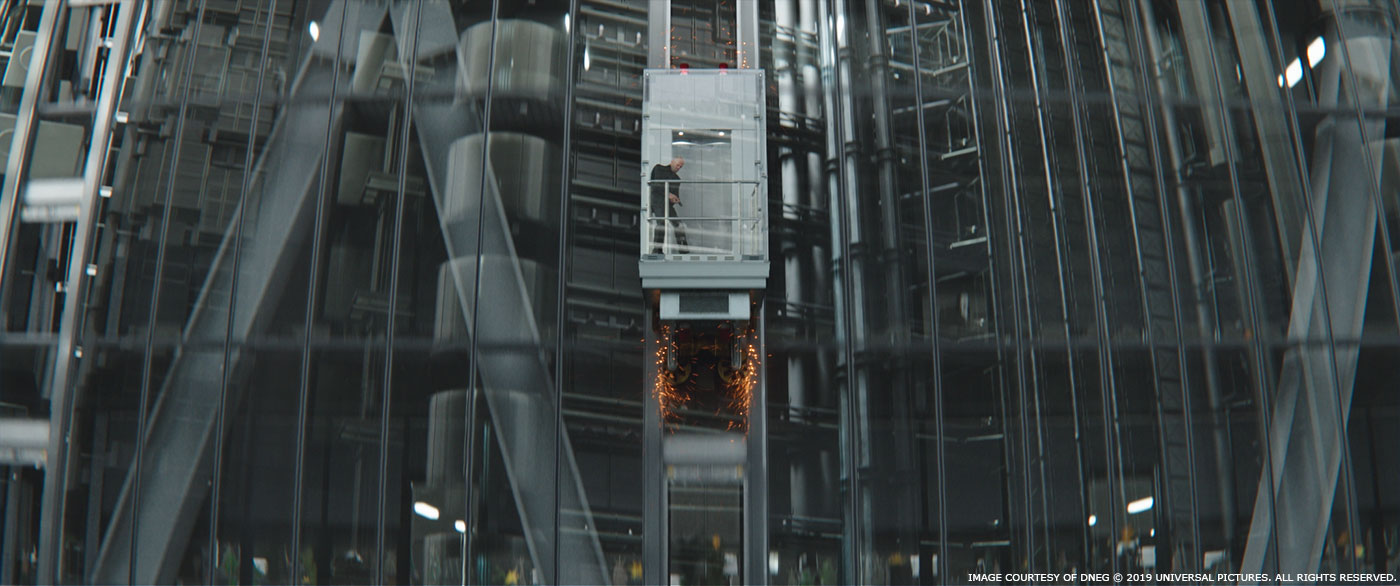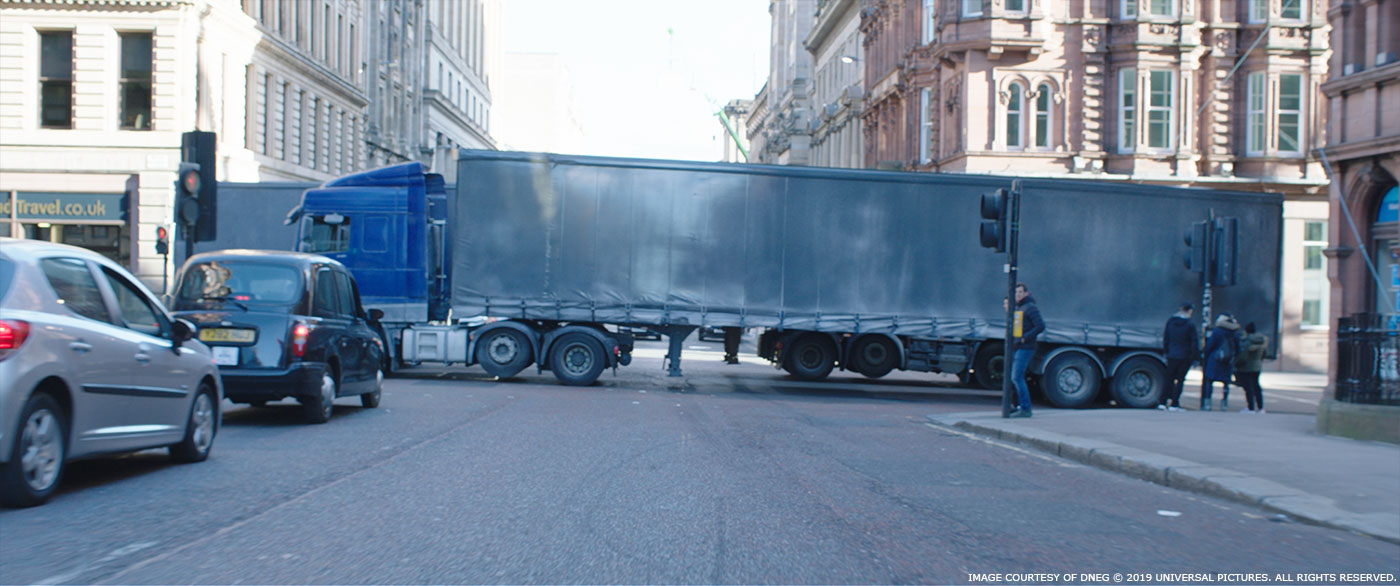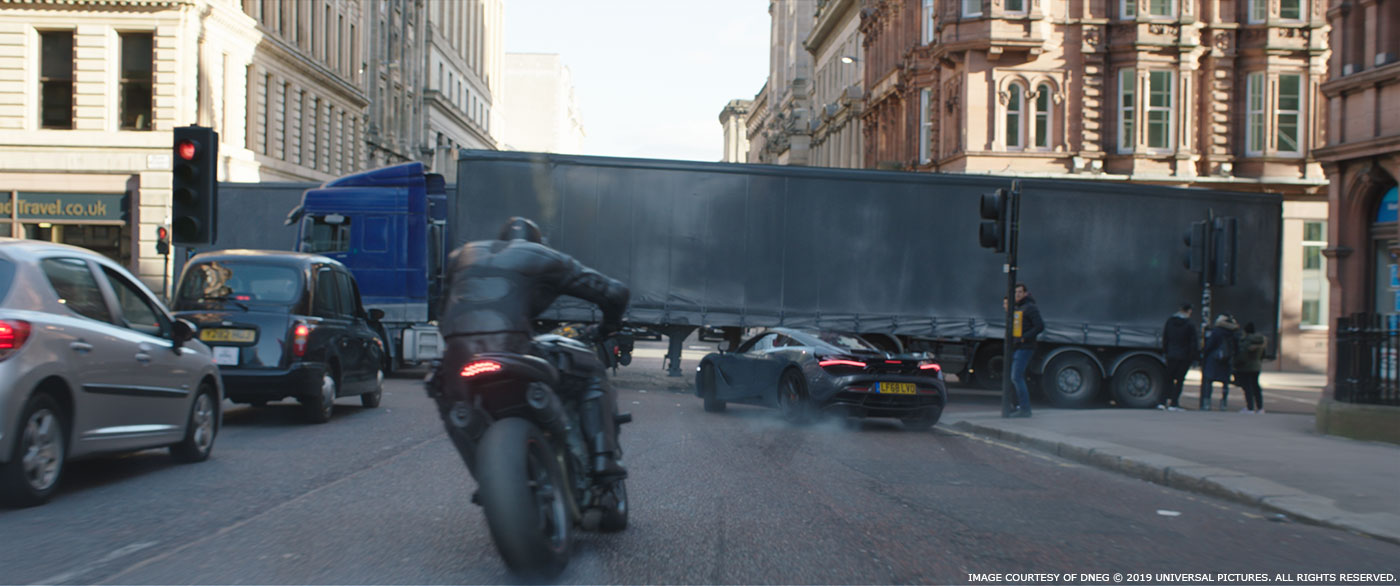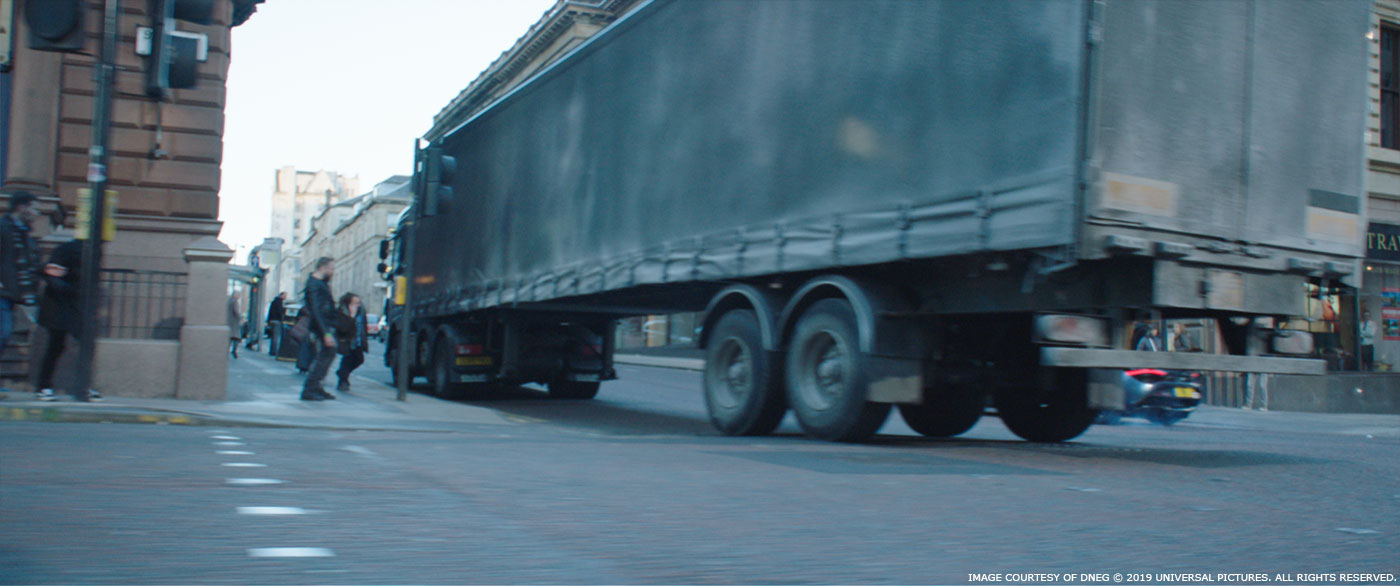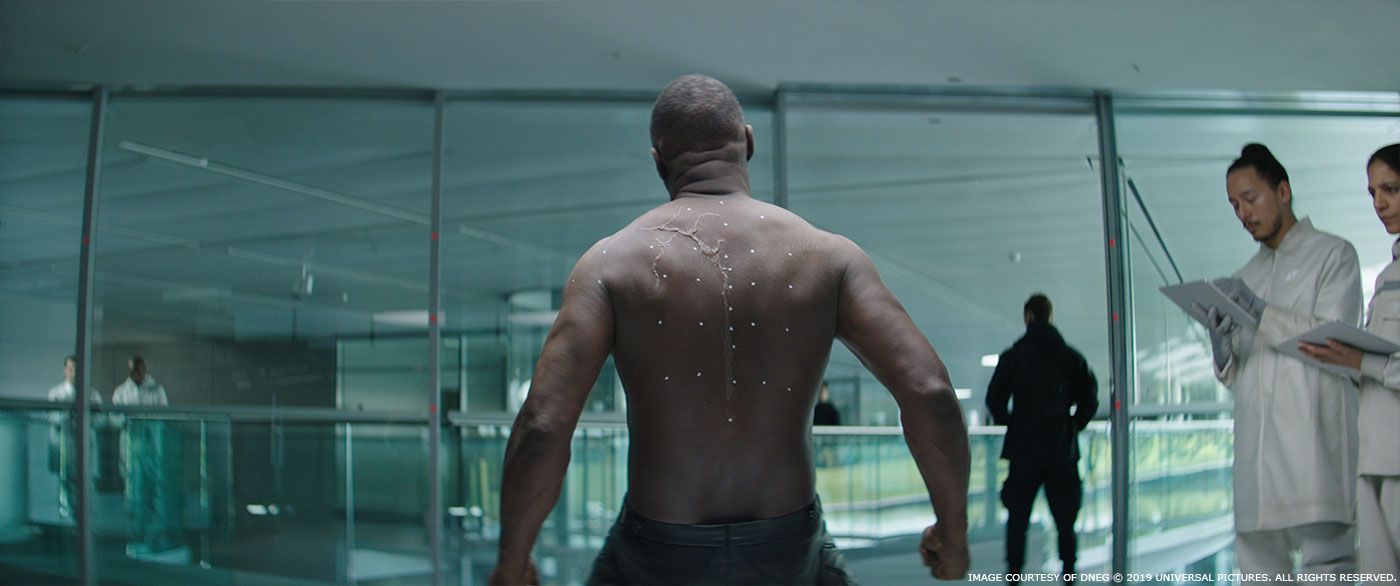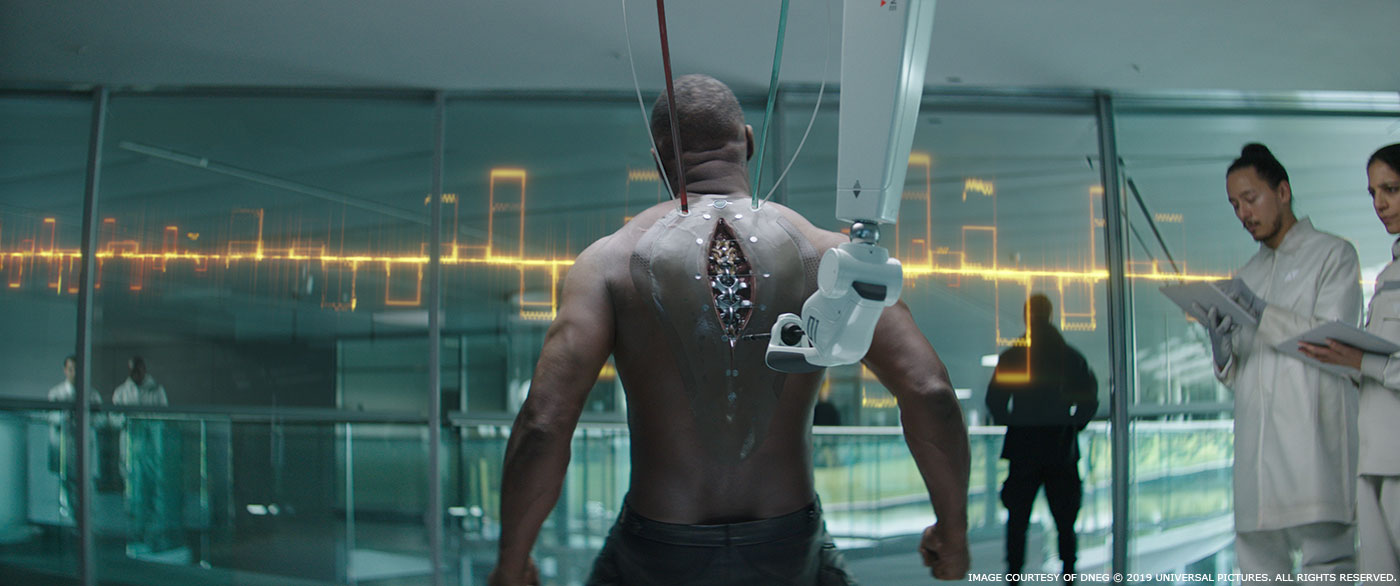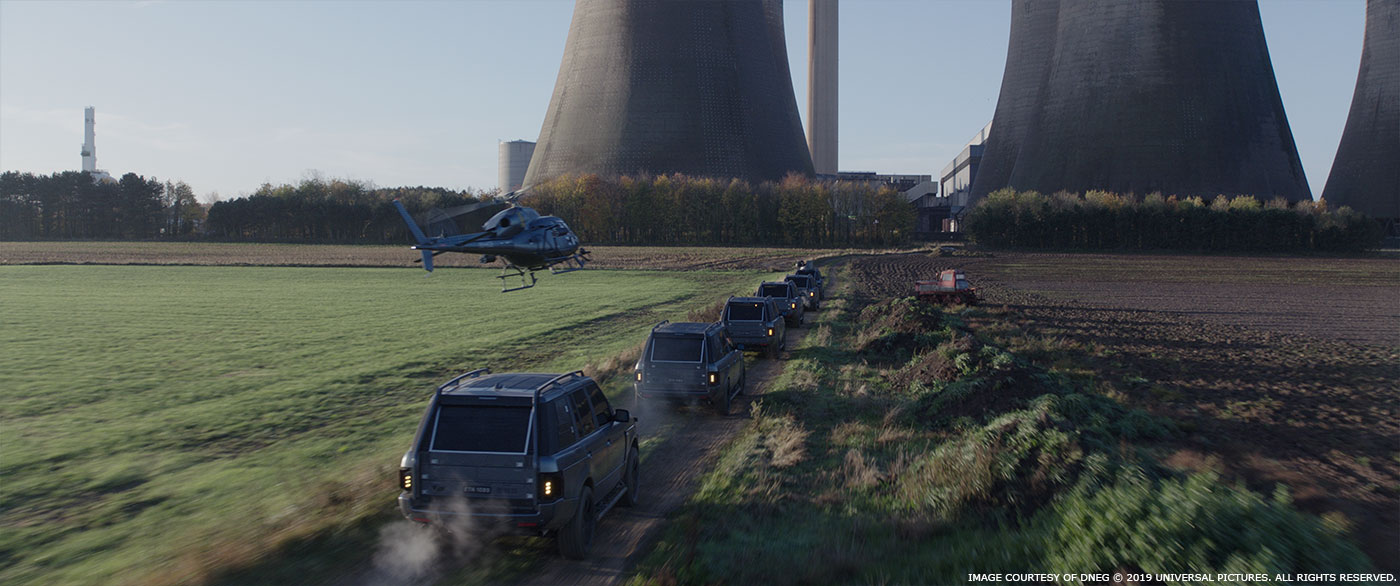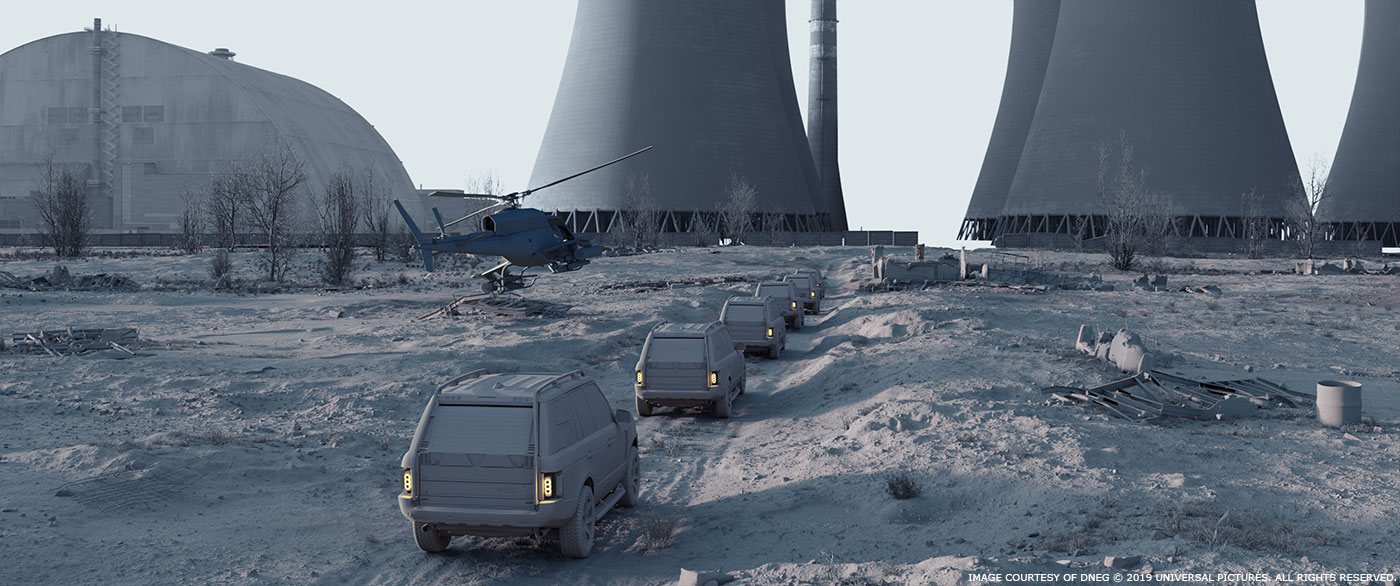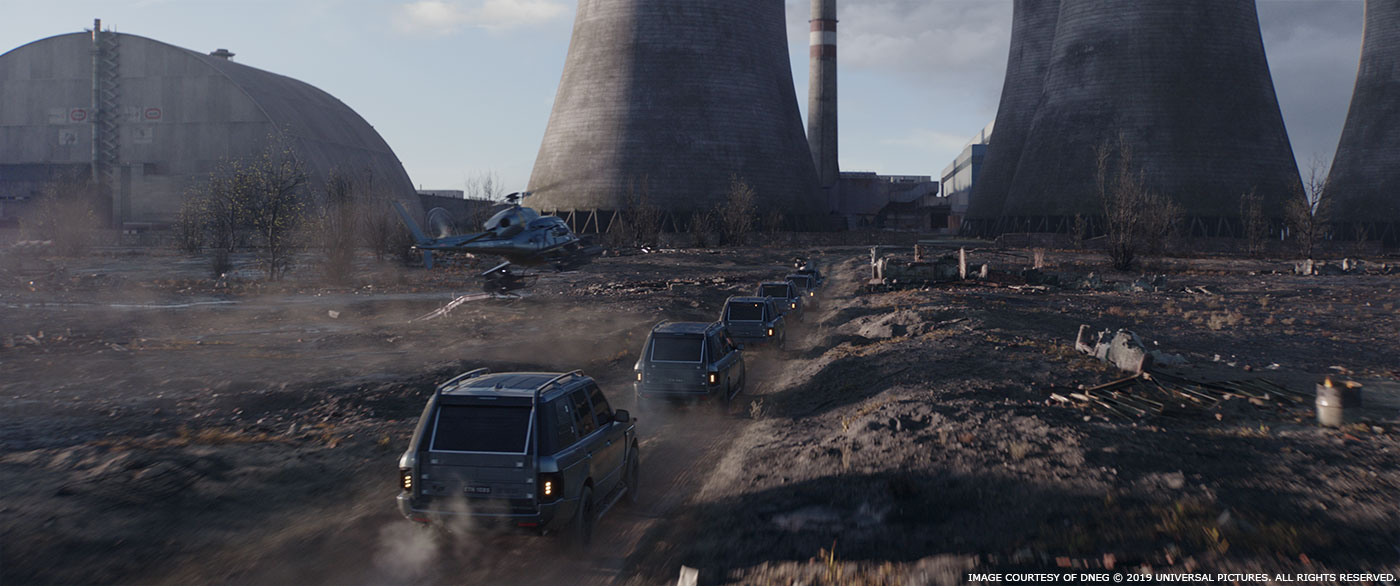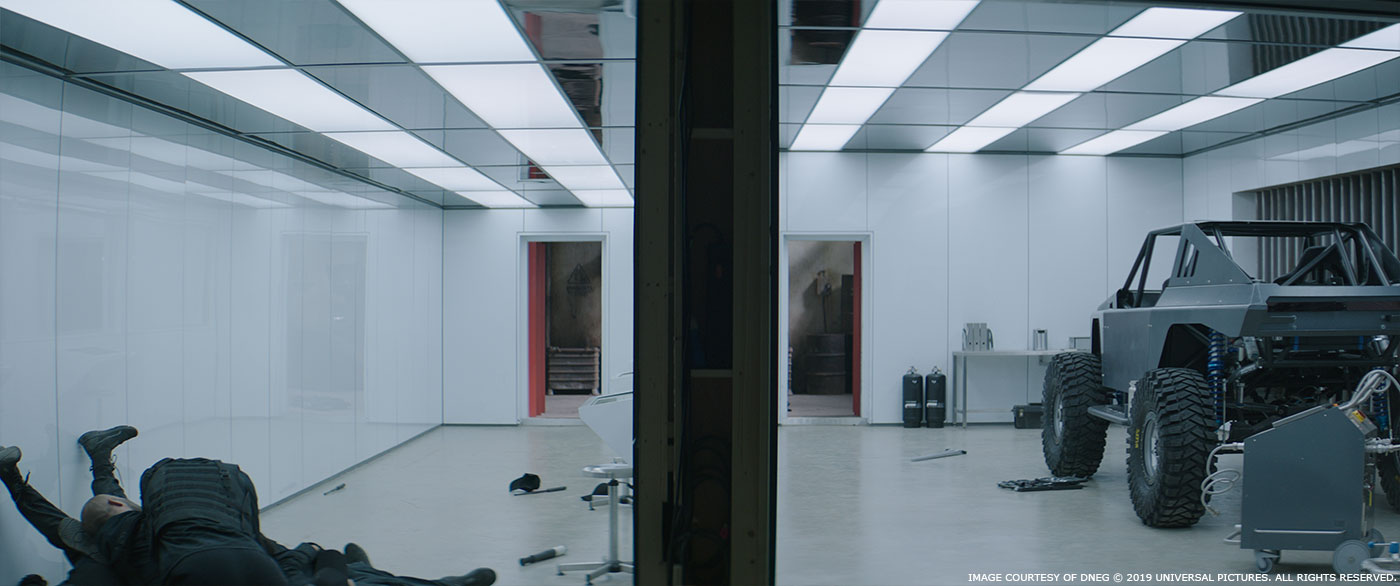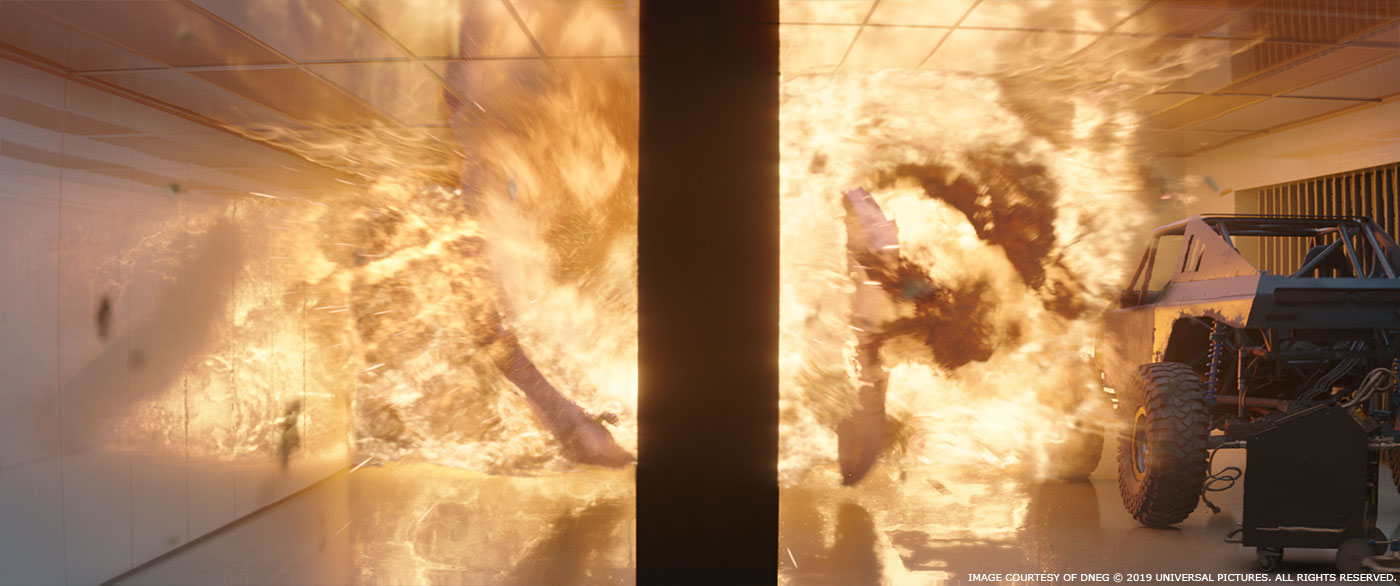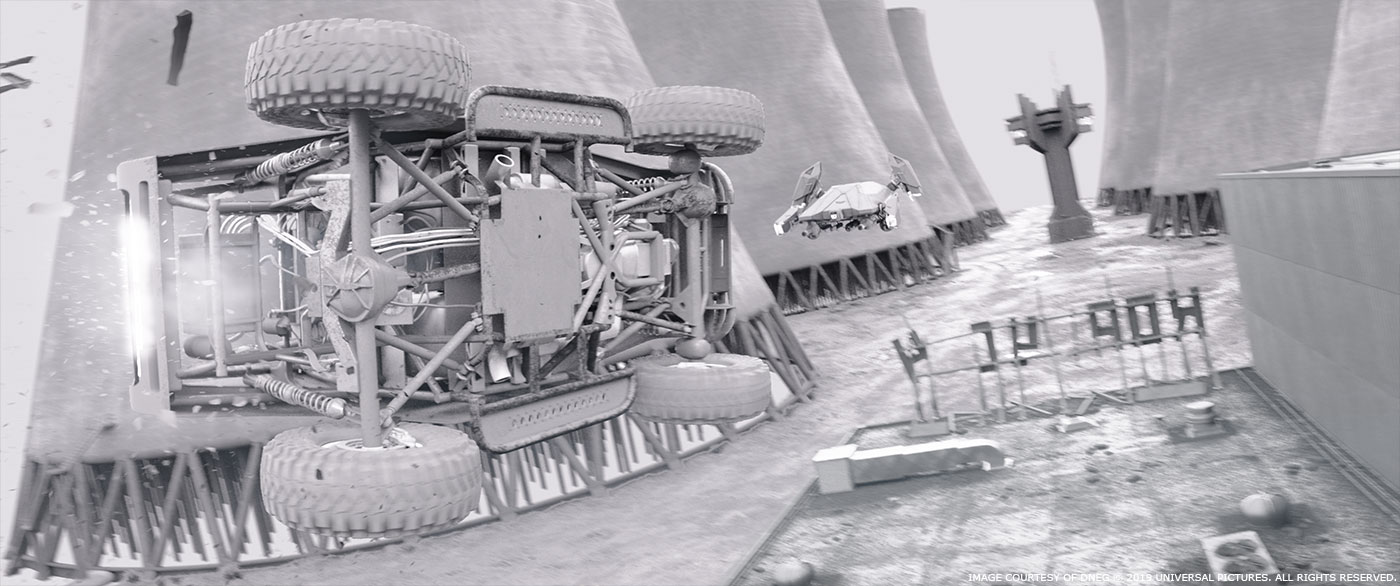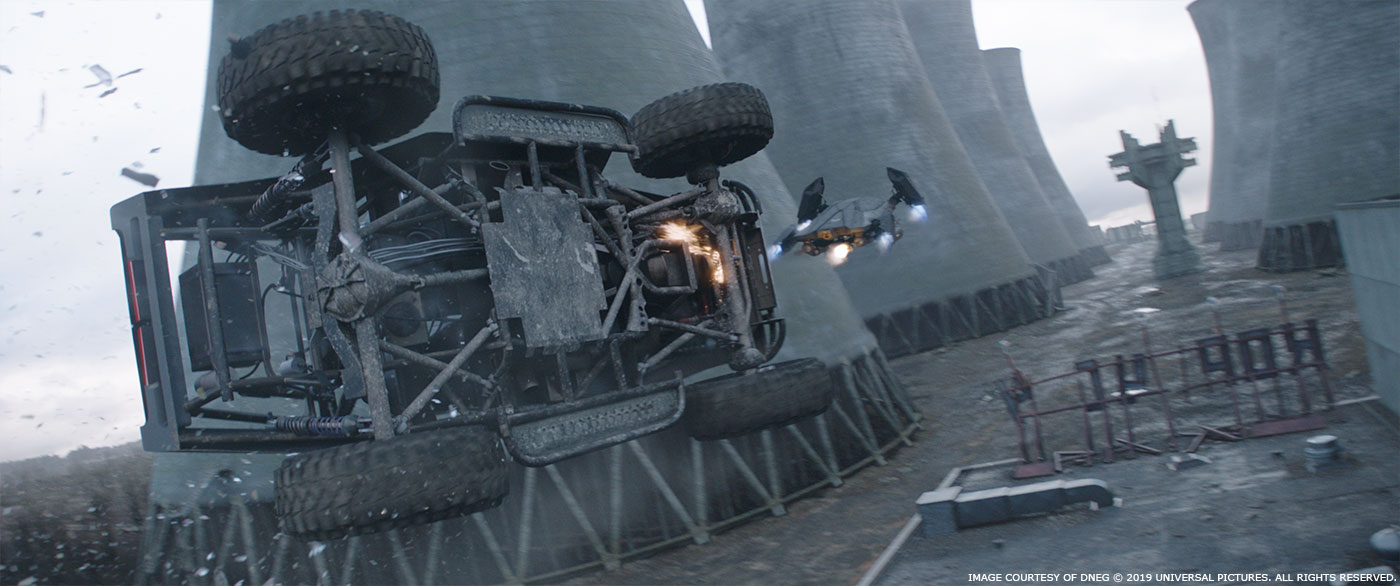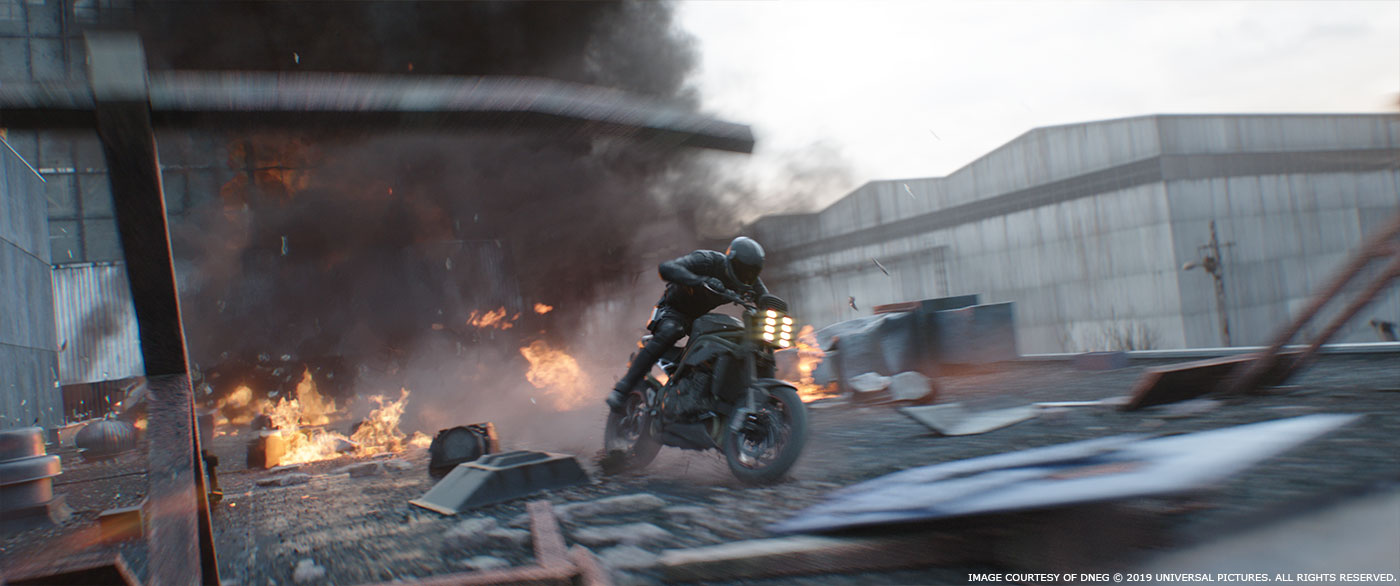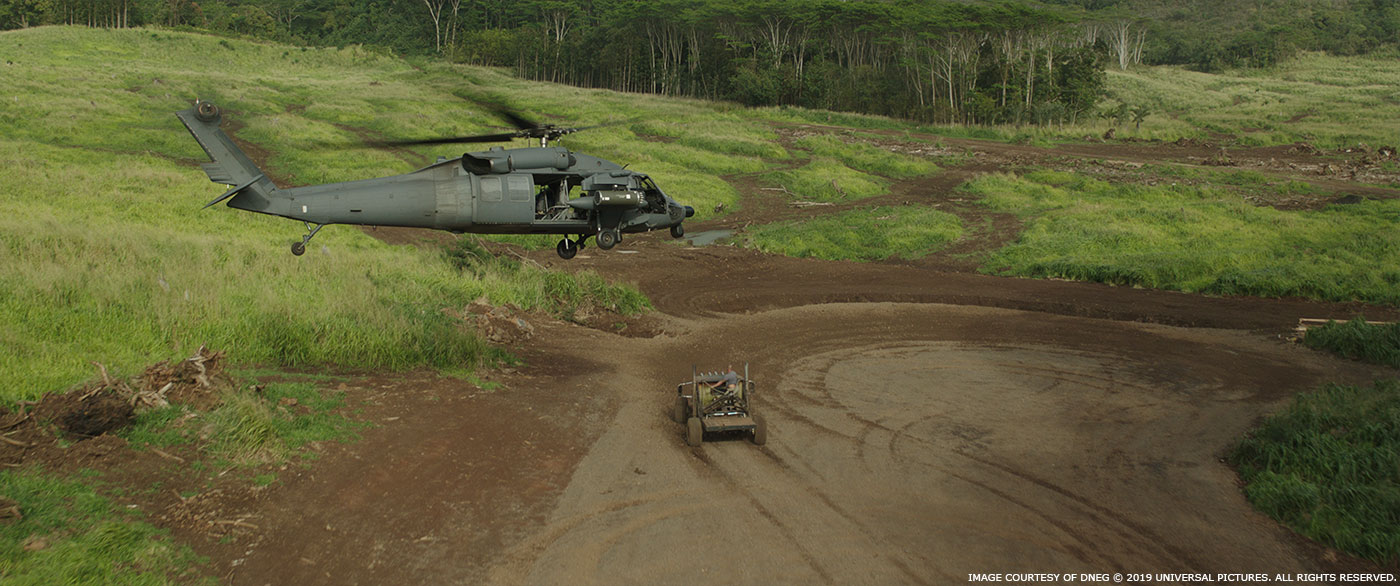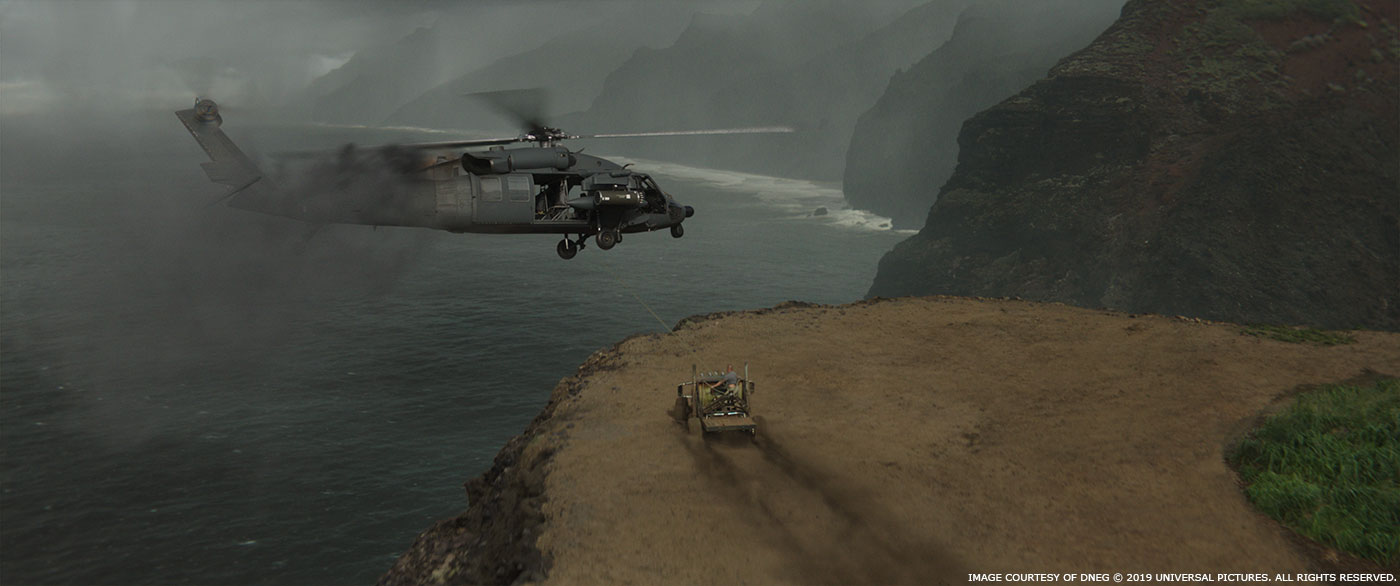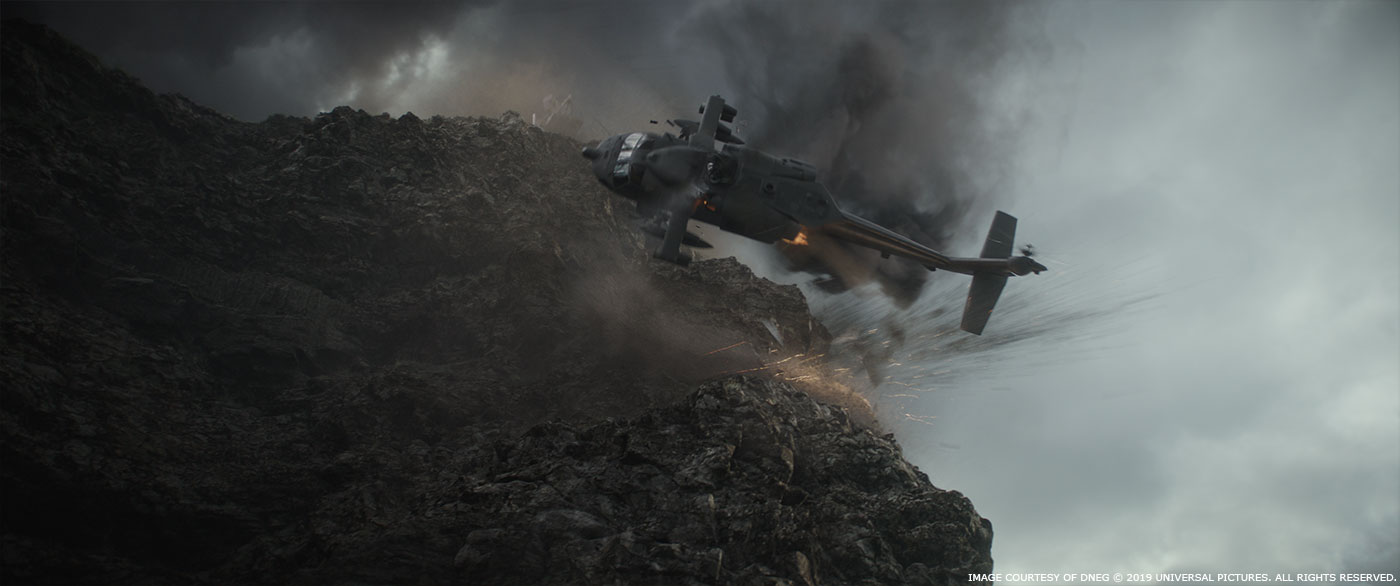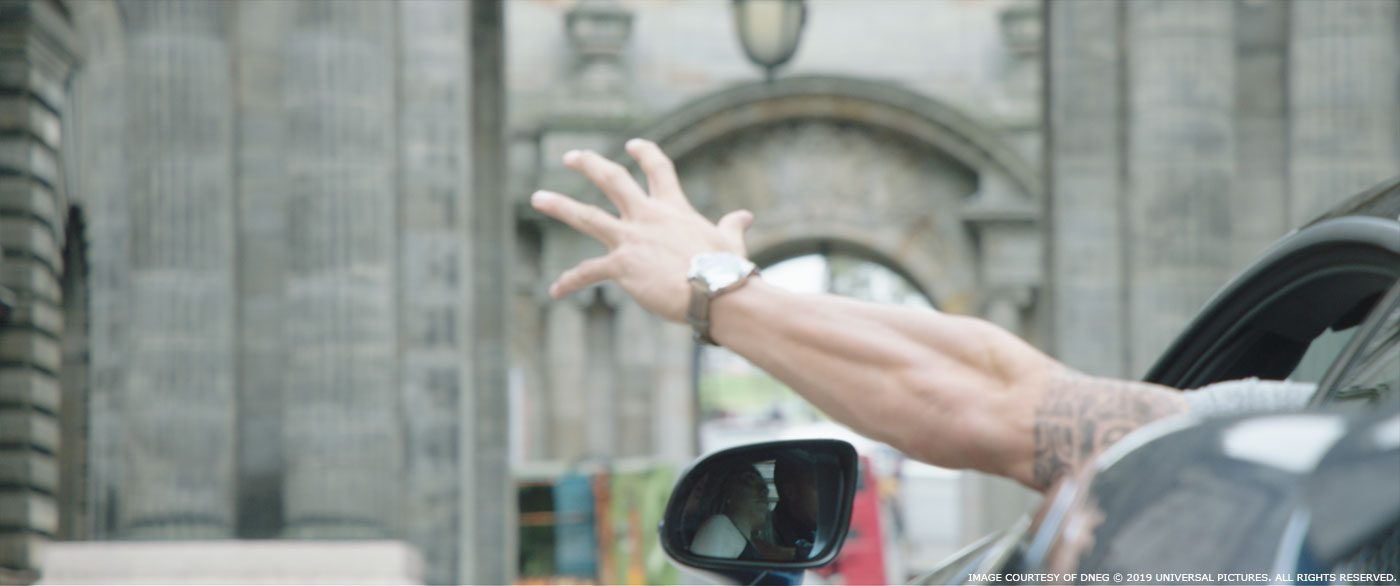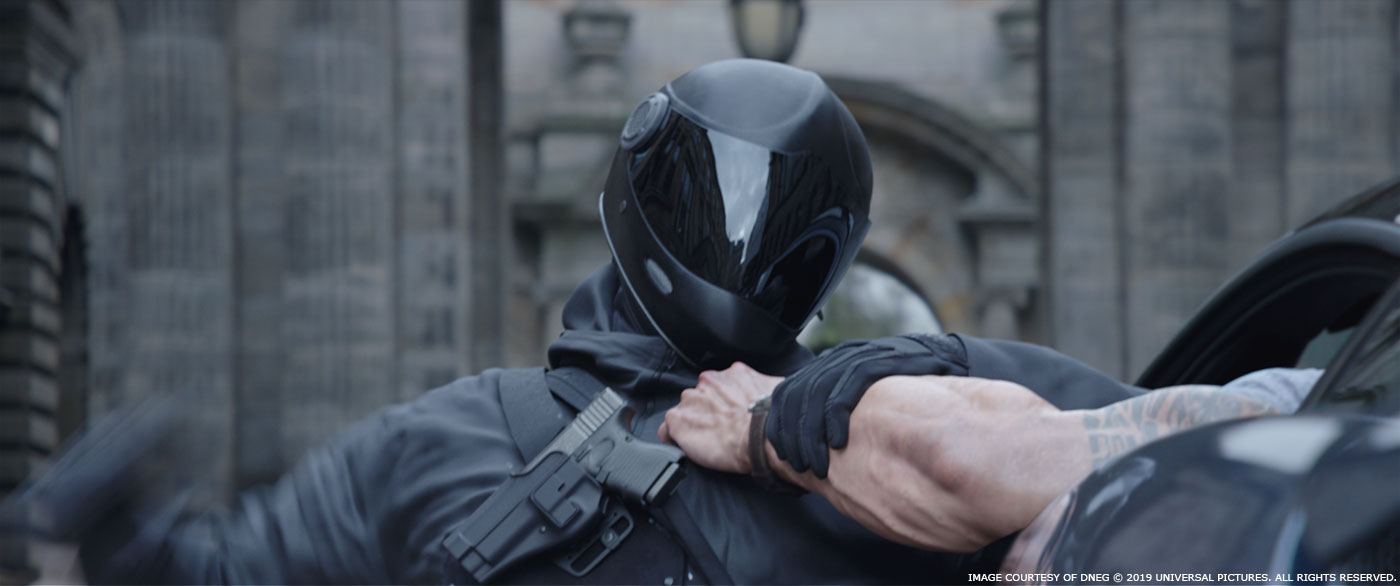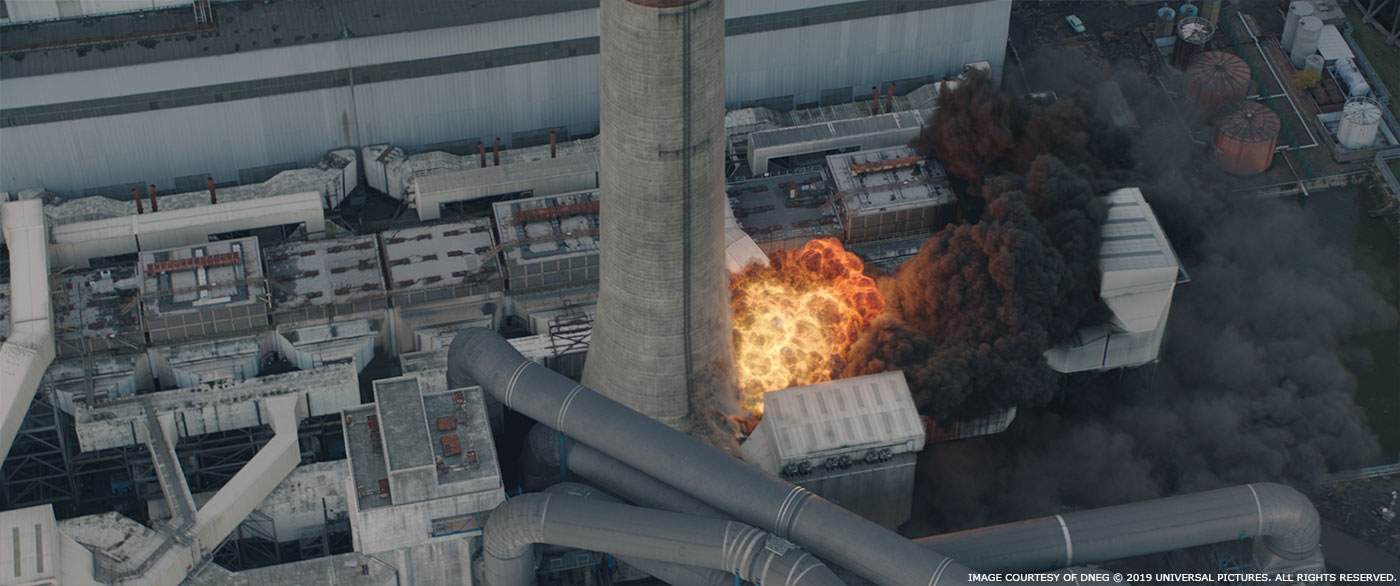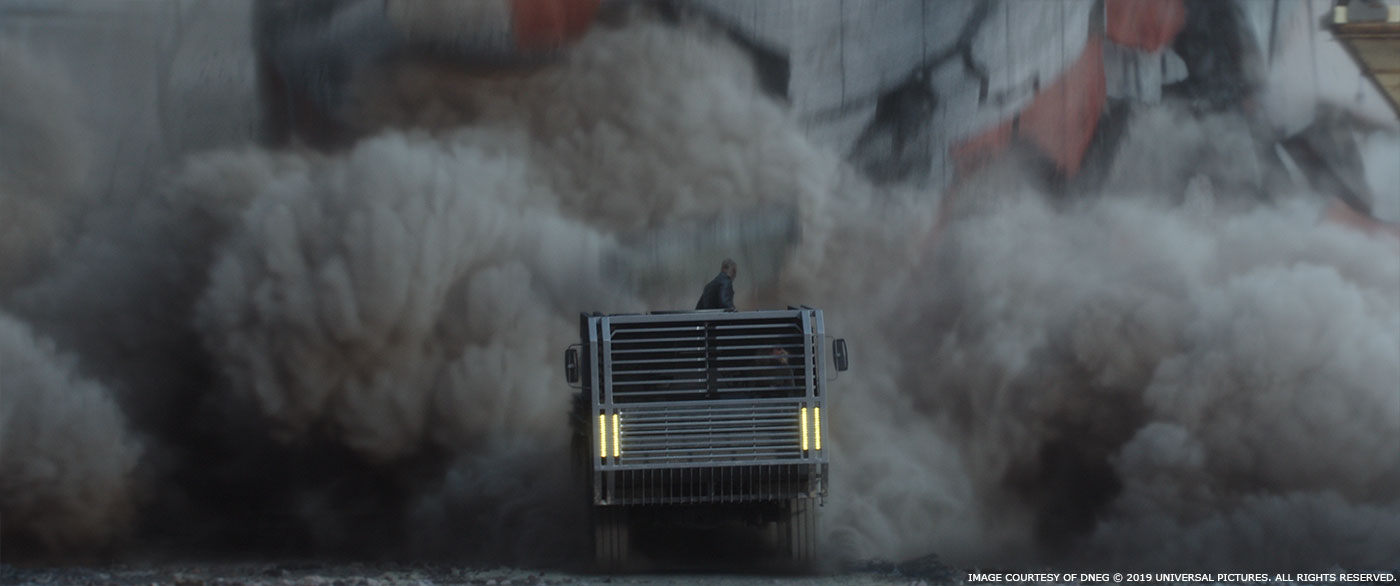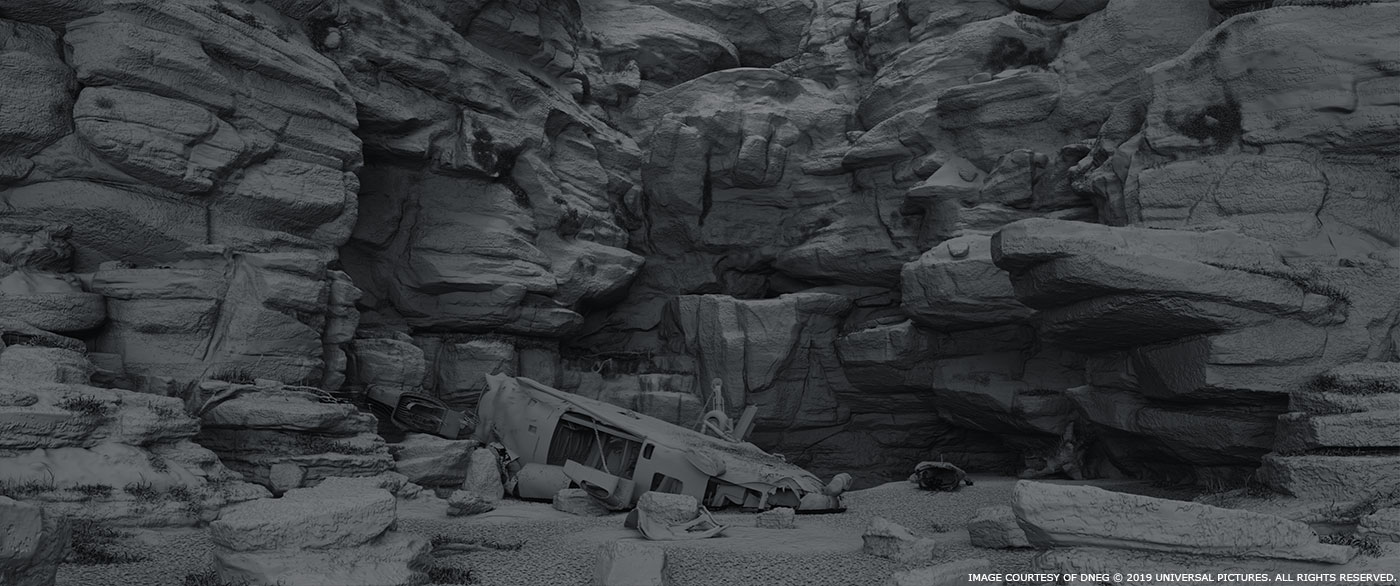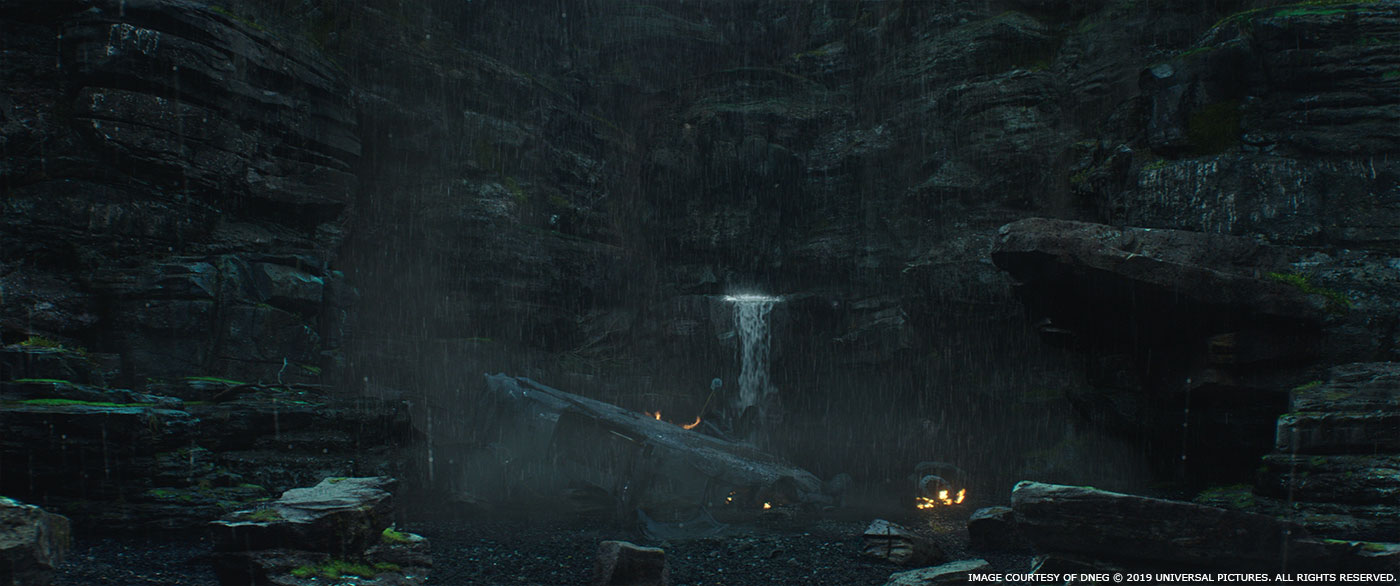Last year, Mike Brazelton explained the work of DNEG on DEADPOOL 2.
In 2017, Stuart Lashley told us about DNEG’s work on THOR: RAGNAROK. He then worked on BLACK PANTHER.
How did you and DNEG get involved on this show?
Mike Brazelton // I had recently worked on DEADPOOL 2 with David Leitch and Dan Glass, and as we were wrapping DEADPOOL 2, discussions started about moving onto HOBBS AND SHAW. Thankfully things lined up and a lot of the DNEG team were able to go right onto HOBBS AND SHAW.
How was the collaboration with director David Leitch and Overall VFX Supervisor Dan Glass?
Stuart Lashley // Really great. Dan was keen to get us involved pretty early on in the production allowing us to have valuable input going into the shoot which is always a preferred way to work. David had some really great ideas for some cool VFX and developing these ideas into the completed shots with him and Dan was a very rewarding process.
Mike Brazelton // It was really amazing to keep the creative momentum going from DEADPOOL 2 to HOBBS AND SHAW. We were able to skip the ‘getting to know you’ part of working with a new team. David and Dan are both very collaborative, they give you the space to own your sequences. Neither are micro managers and I really appreciate that.
What were their expectations and approach about the visual effects?
Stuart Lashley // The expectation was always to deliver a spectacle. We would push shots to a point where we thought we were at ’11’ and in David’s mind we were more like at an ‘8’. More is more was the way to go on this one.
Mike Brazelton // Their expectations were to make the worlds immersive and believable while keeping the intensity and crazy action up to 11. The approach we use is working in beats. Getting hero shots established, then filling in the surrounding shots.
How did you organize the work with your VFX Producer?
Mike Brazelton // Anton Agerbo, DNEG’s VFX Producer on the show, managed all DNEG production teams globally.
How did you split the work amongst the DNEG offices?
Stuart Lashley // The work was split between our London, Vancouver and Mumbai offices.
What are the sequences made by DNEG?
Stuart Lashley // The hero sequences were the office descent, McLaren chase, Chernobyl and Heli crash/Samoan cave at the end. There were lots of other smaller sequences worked on as well.
Mike Brazelton // Chernobyl Break In, Chernobyl Escape, Eteon base, Chernobyl Carkour, Samoan Chase, Mantruck Fight, Chernobyl White Room.
How did you approach the various crazy action sequences?
Stuart Lashley // The McLaren chase was based around the practical stunt photography that accounted for the majority of shots with us taking over where things were too dangerous or just impossible to do for real. It was great to have the practical photography there as the basis so the VFX are grounded into something photographically and physically. There are some bits that push the laws of physics of course. We had previs that Dan had developed prior to the shoot as our initial reference for the work but shots naturally evolved through post production as the sequence was worked up. The building descent involved building more of a CG environment with the photography being mainly the actors or stunt doubles on wires over blue screen. Again we had previs at the start as the main reference for shot design. It was important that the background of the building and the surrounding London streets was completely believable to sell the action. We did an extensive amount of photographic reference collection of the real location in order to build the environment to the level of detail needed.
Mike Brazelton // To do action sequences you really need to be able to collaborate. There is usually a mix of blue screen shots and shots filmed on location, so getting the blue screen material feeling like it was shot in the world is always a challenge. We improved our array rig for this film and it really helped, as we are working with arrays more and more and understanding how to shoot them, and what shots they will work with. There was a good understanding of what the shots were about as we shot them, so we were able to get the material we needed to fill in the world. The fun part is taking all the practically shot elements and the reference material you gathered, and making a sequence from it!
Can you elaborate on the long chase sequence in London?
Stuart Lashley // The work in this sequence included lots of blue screen car interior shots where we added in the backgrounds shot on location as well as CG reflections to the exterior of the McLaren on stage that the actors were filmed in. We had some motion graphics work adding all of the data readouts from Brixton’s visor. There were a few head replacements where stunt drivers were visible. One moment where Hobbs grabs a rider of his bike was done with a full CG character for the rider. The big slide under the semi trucks with the transforming bike is almost fully digital as far as the main vehicles and characters go. Finally there’s the end shot of Brixton hitting the bus which starts off mostly digital and transitions into photography half way through.
Where were the various parts of the chase sequence filmed?
Stuart Lashley // The chase was filmed in Glasgow playing as London streets.
How did you create the digital doubles for the first part of the London sequence?
Stuart Lashley // The digi doubles started with very high detail data capture of the main actors. We used Clear Angles latest capture technology to ensure we had very high fidelity data going in to the character build. We then created 1:1 digital matches to the reference photography captured in that process. The characters are then rigged and tested in shot with any tweaks and adjustments being made as necessary.
The chase moves in the streets with cars and motorcycles. How did you create these vehicles?
Stuart Lashley // The majority of vehicles were built from static reference photography and digital scans of the real vehicles on set. We did some extra reference collection for the McLaren placing it on a turntable to evaluate it’s detail and surface quality at a very high level as we knew this car would be featured very close to camera and had a very distinctive quality to its paint that we wanted to replicate as closely as possible.
Can you elaborates on the design and creation of the Brixton motorcycle?
Stuart Lashley // The design and initial build of the motorcycle was based on the scan and photography of the real bike on set. A little bit into production the request came in to have the bike transform in a cool way to help Brixton perform some insane manoeuvres. We took the framework of the bike we had created and started experimenting with how it’s transformation could look. Our animators broke it apart to do some initial tests and once David was happy with the transformation we re-rigged it correctly ensuring the mechanics were solid.
How did you handle the animation of Brixton motorcycle?
Stuart Lashley // Once the bike’s new transformation rig was done the animators applied this in shot trying all the time to create these awesome shapes and poses in both bike and rider. The resulting shots definitely have that wow factor.
Brixton is the bad guy and is super strong. How did you help him to be the Black Superman?
Stuart Lashley // It was always planned for Brixton to have a level of enhancement that gave him the edge over Hobbs and Shaw who are both really almost super human in their strength and fighting ability. David wanted Brixton to have tactical information available to him that would help in any combat situation. We developed the look in motion graphics for what was dubbed ‘Brixton Vision’, a kind of heads up display of stats and data he had built into him. A lot of his super human-ness comes simply from the fact he can out-fight Hobbs and Shaw together and remain fairly unscathed after some pretty gnarly impacts.
The action moves to a secret base. How did you create the huge environment?
Mike Brazelton // We filmed at a decommissioned coal power plant. It was a great base to start from, and Production Designer David Schuenemans team did an amazing job setting the tone. We did an incredible amount of technical coverage including helicopter stills/video, arrays on the ground, Lidar, and texture reference throughout the facility. Environments supervisor Pedro Santos and his team used all these pieces to age/weather and extend parts of the facility to create the world you see in the film.
How did you create and animate the huge explosion?
Mike Brazelton // The heroes in the movie plant c4 on a munitions building so we knew the type of explosion we wanted. We used practically shot elements as reference, then the FX team (led by Jez Smith) created the 3d explosions to match them.
Can you elaborates on the various destructions of this environment?
Mike Brazelton // The heroes create a chain reaction explosion that rips through the facility, so we have different rooms and different fuel types blowing up. We tried our best to reference real world explosions and in some cases are able to use practically shot elements.
The bad guys are using drones. How did you design and create them?
Mike Brazelton // We went through a couple design phases with the drones. They took a while to get the look and movement correct. They are meant to feel heavy and menacing, while also being in sync and precise.
How did you create the fight on the back of the truck?
Mike Brazelton // The back of the truck fight is a mix of blue screen fights and environments explosions all around them. This sequence was one of the later sequences to come together as we had to do some reshoots to fill it in. Depending on the camera moves, we were able to use arrays or full CG backgrounds. It worked out to a nice balance of arrays and CG backgrounds. Having arrays really keeps the work grounded in reality as you have to match in the details for the CG backgrounds.
The final fight involved really impressive super slow-motion shots. Can you elaborate on their work on it?
Stuart Lashley // David really wanted to make this final punch-up feel epic. It’s the moment Hobbs and Shaw finally get in sync and are able to overcome Brixton so the moments that these hits connect had to have a lot of visual impact. We had discussed various ideas but eventually landed on this idea of having huge sprays of super slow-motion water accentuate each hit in a very stylised and hyper-real way. We did a lot of FX development to get to the look of the water which is very art directed in terms of shape, velocity, droplet size etc. David wanted these to feel almost like frames out of a comic book with the water creating action lines along the direction of the hits.
Which shot or sequence was the most challenging?
Stuart Lashley // The water was pretty challenging due to the stylistic nature of what was required but the results were ultimately rewarding.
Mike Brazelton // The Samoa chopper destruction shots were probably the most challenging. It’s really difficult to do these big full CG shots in a short time schedule. There is so much detail you can only layer in with iteration, and iteration takes time. The nature of the work also added to the complexity of the shots. We had to animate how the chopper and characters fell to match some story points. This really makes it difficult, as you are trying to bring realism to an unrealistic action sequence.
Is there something specific that gave you some really short nights?
Stuart Lashley // This project had a very tight schedule which in itself made all of our nights very short.
Mike Brazelton // The compressed schedule and amount of work kept us very busy for the later part of the show. I’m really proud of our team, everyone worked as a team and we had a great time doing it.
What is your favorite shot or sequence?
Stuart Lashley // I particularly like the moment Hobbs grabs the Biker off his bike. The biker and Hobbs’ arm are digital in that shot.
Mike Brazelton // I really love the shot of Brixton getting his back worked on. It’s the first shoot and shot we had turned over on the show. We had the time over the course of the show to keep making it better. It was one of the last shots to be done!
What is your best memory on this show?
Stuart Lashley // The Glasgow shoot for the McLaren chase was good fun. Shooting car chase sequences with 2nd unit generally always are.
Mike Brazelton // I really enjoyed the whole process. Working with Dan and David Leitch has been a real pleasure. While also having such a great team at DNEG to help support their vision, makes it easy.
How long did you work on this show?
Stuart Lashley // About 9 months.
Mike Brazelton // I worked on the show about 9 months.
What’s the VFX shots count?
Stuart Lashley // Overall 1000 shots approx.
What was the size of your team?
Stuart Lashley // Around 1200 crew worldwide; split between 3 units in London, Vancouver and Mumbai.
What is your next project?
Stuart Lashley // Can’t say at this stage.
Mike Brazelton // I don’t have a show confirmed just yet, I’m enjoying some time off this summer!
A big thanks for your time.
WANT TO KNOW MORE?
DNEG: Dedicated page about FAST & FURIOUS PRESENTS – HOBBS & SHAW on DNEG website.
© Vincent Frei – The Art of VFX – 2019


